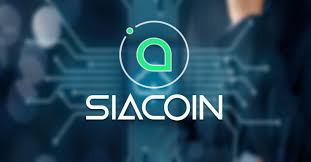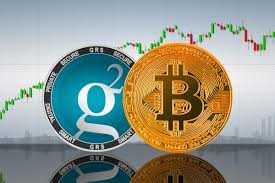Beam cryptocurrency is a new generation project aimed at providing the community with financial freedom by creating a completely confidential value exchange system based on the MimbleWimble protocol.

The Beam developers believe that their brainchild will become a really useful money tool for everyday use. According to them, the main advantages of the Beam cryptocurrency are:
- High level of anonymity, scalability, and energy efficiency;
- Flexibility and a huge number of application variations in various fields;
- Ease of use as a cryptocurrency tool for transferring funds;
- High level of decentralization, ensured by compatibility with a wide range of mining equipment;
- Availability of Opt-in Auditability (audit on demand) and Atomic swap (atomic swaps between blockchains);
- Support for both online and offline transactions.
- Cryptocurrency Beam (BEAM) is the native token of this blockchain project and acts as a means for accumulating and transferring value between network users.
The smallest particle of the Beam cryptocurrency is the growth. It equals one hundred millionth BEAM (bitcoin’s satoshi principle) and is named after Jens Groth, professor of cryptology at University College London.
Beam history
The history of the Beam project begins with MimbleWimble, a cryptography-based elliptic curve protocol whose WhitePaper was proposed in 2016 by an anonymous developer.
Interesting! Both the name of the technology itself and the pseudonym of its creator (Tom Elvis Jedusor) are borrowed from J.K. Rowling’s book series about the young wizard Harry Potter.
In her books, MimbleWimble is a spell that makes a person tongue-tied, i.e. makes it impossible to speak clearly. With blockchains that work on the protocol of the same name, about the same thing happens – they cannot disclose information about the actions of their users.
MimbleWimble was originally intended to be the solution to the bitcoin scalability problem. However, due to the complexity of the implementation of this venture, the developers decided on the advisability of creating separate crypto projects based on this anonymous protocol.
Work on one of the MimbleWimble implementations has been carried out since March 2018 by the Israel-based company Beam Development Limited, most of whose employees are from post-Soviet countries.
The launch of the main network of the Beam cryptocurrency took place 10 months after the start of development – on January 3, 2019, on the day of the 10th anniversary of the Bitcoin genesis block. Thus, this project became the first working implementation of the MimbleWimble protocol. The second was the Grin cryptocurrency, the creation of which began a year earlier than Beam, but in the end, it was launched 12 days later than its competitor.
The Beam project is organized in the form of a classic non-ICO startup (without a premise and initial coin offer), which initially received funds from investors as part of a closed round.
The current financial model of the Beam cryptocurrency is based on the functioning of the so-called Treasury, which, within the first 5 years after the launch of the network, will be replenished by deducting 20% of all coins mined by miners. This savings pays a monthly salary to the core team, as well as remuneration to consultants, investors, and the non-profit Beam Foundation, to which they plan to transfer project management in the future.
The chosen funding model should create a balance of interests between all participants in the Beam ecosystem and guarantee its development in the long term.
Mining Beam
At the moment, the mining of Beam coins is implemented based on a modified version of the Equihash PoW algorithm (150.5). In 2020, the developers made several changes to the coin protocol that ensured long-term protection of the network from ASIC devices.
Mining Beam is available for computers running Windows, Linux, or Mac operating systems with video adapters with at least 4GB of memory (AMD RX560 + / Nvidia GTX 1050+).
The necessary software can be downloaded on the official website of the project, but the popular GMiner and Bminer applications with Equihash support are also suitable.
An important feature is that you can mine coins both with the help of an OpenCL / Cuda miner (GPU) sharpened for this process and through the toolkit (GPU / CPU) built into the desktop wallet.
New blocks in the Beam network are created every 60 seconds. This generates 100 coins, 80 of which are paid to miners, and 20 go to the Treasury of the project.
About 144,000 tokens come into circulation every day. In total, the BEAM issue cannot exceed 262.8 million coins.
There is a planned decrease in the reward for miners to 40 coins for the period from 2 to 5 years, to 25 – from 6 to 9 years. Further, up to the year 133, when the emission should stop, there will be an annual halving of the remuneration. Thus, in the first 13 years, about 90% of all BEAMs will be issued (now there are 88.32 million coins in circulation, i.e. about 8.6%).
At the moment, almost half of the network hash rate is provided by the LeafPool mining pool. The second and third places are taken by Spark Pool and 2Miners.










